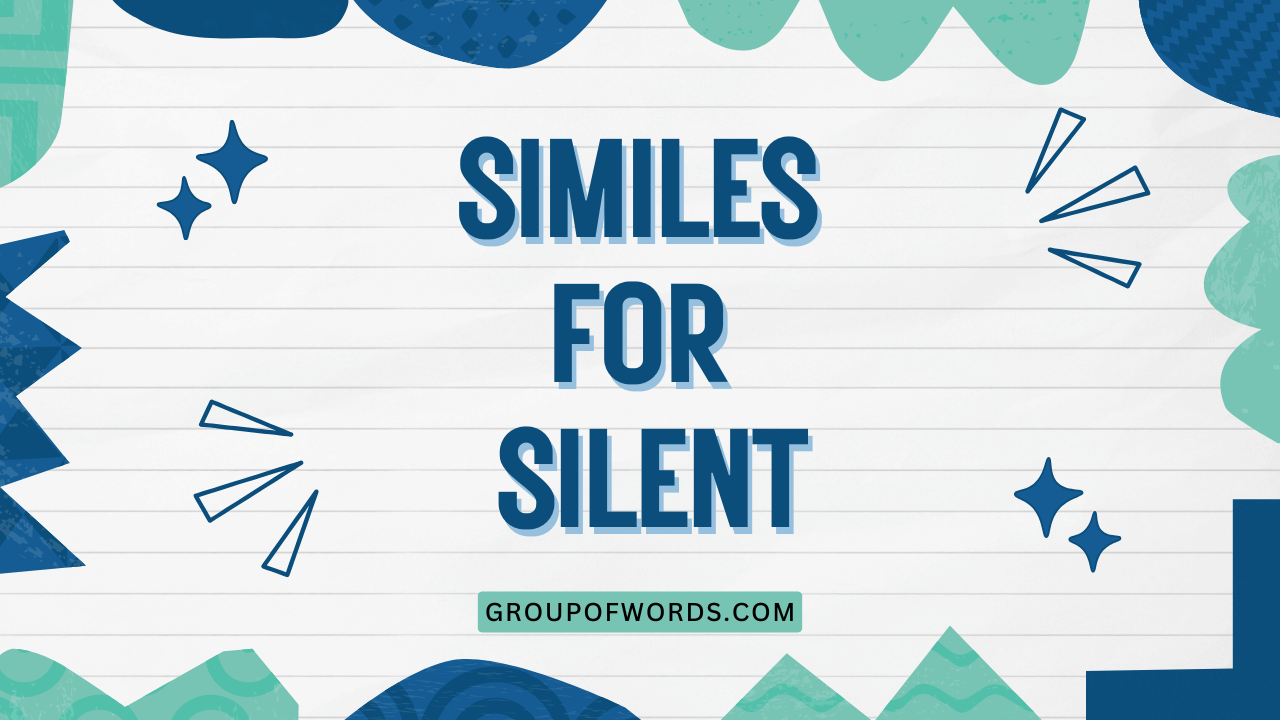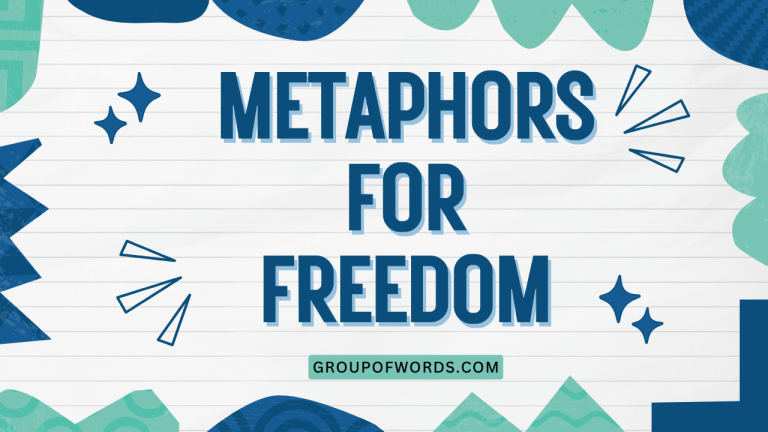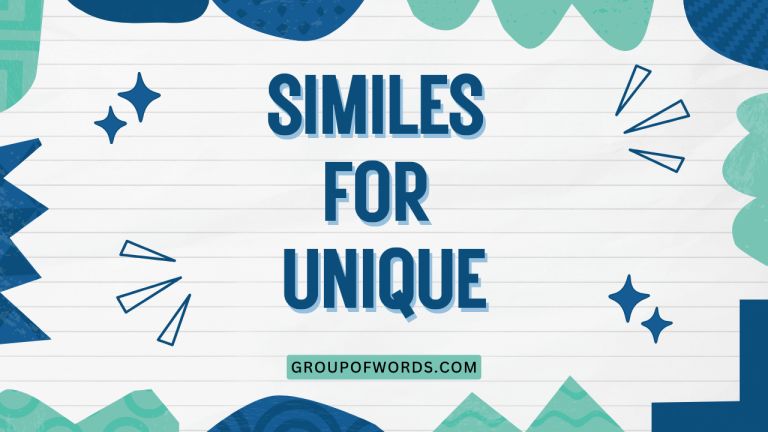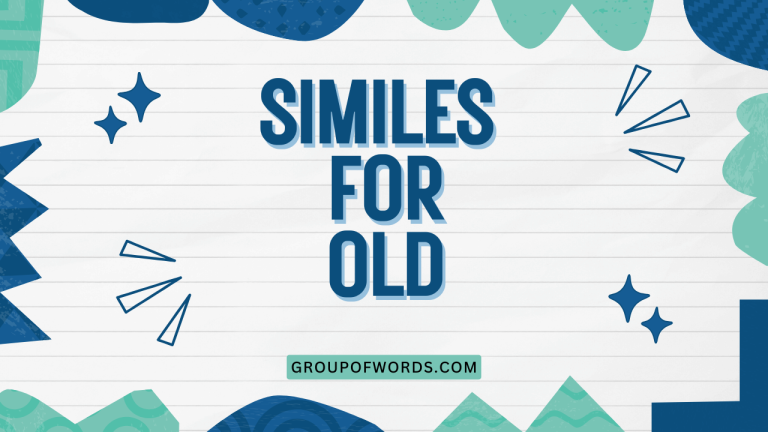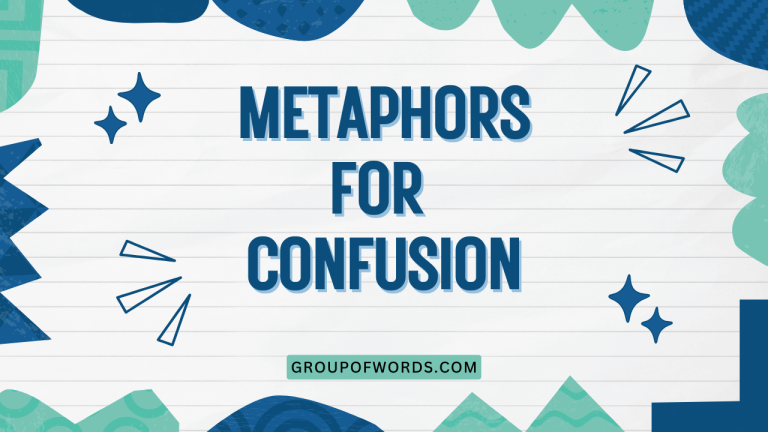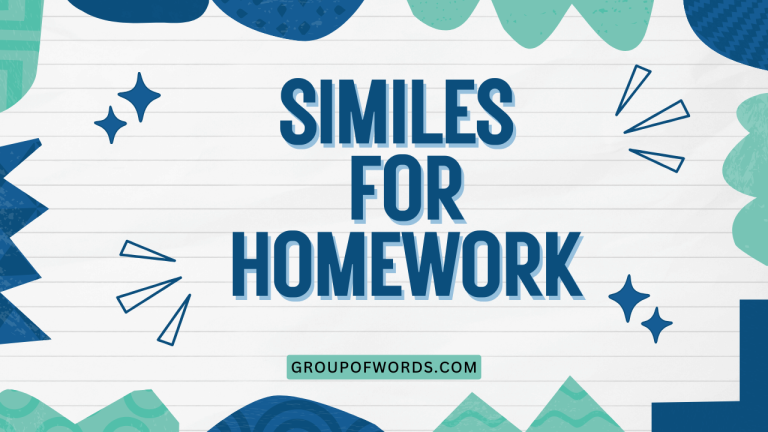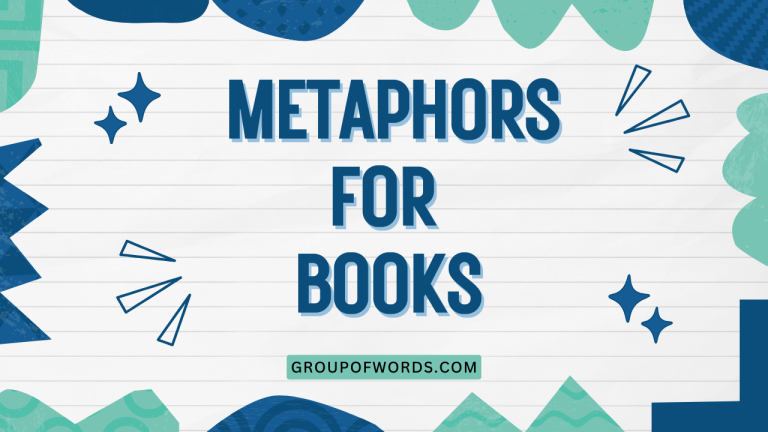Similes for Silent: Mastering Figurative Language
Understanding similes is crucial for enriching your writing and comprehension skills. Similes allow you to create vivid comparisons, making your language more engaging and descriptive.
This article focuses specifically on similes for the concept of “silent,” providing you with a comprehensive guide to effectively use this figurative language. Whether you’re a student, writer, or English language learner, this guide will equip you with the knowledge and tools to master similes related to silence, enhancing your expressive capabilities.
This article will explore various aspects of similes for “silent,” including their definition, structure, different types, and usage rules. You’ll find numerous examples, practical exercises, and explanations of common mistakes to help you confidently incorporate these similes into your writing and speech.
By the end of this guide, you’ll have a solid understanding of how to use similes to effectively convey the concept of silence in a creative and impactful way.
Table of Contents
- Definition of Simile
- Structural Breakdown of Similes
- Types of Similes for “Silent”
- Examples of Similes for “Silent”
- Usage Rules for Similes
- Common Mistakes with Similes
- Practice Exercises
- Advanced Topics in Similes
- Frequently Asked Questions (FAQ)
- Conclusion
Definition of Simile
A simile is a figure of speech that directly compares two different things, using the words “like” or “as.” The purpose of a simile is to create a vivid image or evoke a particular feeling by highlighting the similarities between the two things being compared. Similes are powerful tools in writing and speech, allowing for more expressive and engaging communication. They help the audience understand abstract concepts by relating them to something familiar.
Similes are classified as a type of figurative language, specifically a comparison. They function to make descriptive writing more interesting and impactful.
The context in which a simile is used can greatly influence its effect. For example, a simile used in poetry might aim for a more evocative and emotional response, while one used in scientific writing might aim for clarity and precise understanding.
The effectiveness of a simile often depends on the reader’s ability to understand the connection between the two things being compared. A well-crafted simile adds depth and nuance to the text, making it more memorable and engaging for the reader.
Structural Breakdown of Similes
The basic structure of a simile involves three key elements: the two things being compared (the subject and the object) and the linking word (“like” or “as”). The subject is the thing being described, and the object is the thing it is being compared to. The linking word establishes the comparison between the two. Understanding this structure is essential for creating and identifying effective similes.
A simile typically follows the pattern: Subject + Linking Word + Object. For example, in the simile “The night was as silent as a tomb,” “the night” is the subject, “as” is the linking word, and “a tomb” is the object. The simile suggests that the night shared a similarity with a tomb, specifically its silence. The power of a simile lies in its ability to highlight a specific quality or characteristic shared by the subject and the object. The comparison should be meaningful and contribute to a deeper understanding or appreciation of the subject. Let’s look at another example: “He moved like a shadow.” Here, “He” is the subject, “like” is the linking word, and “a shadow” is the object. This comparison evokes a sense of stealth and quietness.
Types of Similes for “Silent”
Similes for “silent” can be categorized based on the specific aspect of silence they emphasize. These categories help in understanding the different nuances and contexts in which silence can be described.
Here are some common types:
Similes Emphasizing Stillness
These similes focus on the lack of movement or activity, often suggesting a sense of peace or anticipation. They evoke a feeling of complete quiet and immobility.
Examples include comparisons to statues, sleeping objects, or frozen landscapes. The aim is to highlight the absence of any disturbance or motion.
Similes Highlighting Absence of Sound
These similes directly compare the silence to the lack of noise, emphasizing the quietness or muteness of a situation. They often use comparisons to things that are naturally quiet or have been silenced.
Examples include comparisons to empty rooms, a vacuum, or a muffled sound. The focus is on the absence of any audible sound.
Similes Suggesting Secrecy
These similes associate silence with hidden or unspoken information, suggesting a sense of mystery or concealment. They often compare the silence to something that is deliberately kept quiet or hidden from view.
Examples include comparisons to a secret, a locked diary, or a concealed plan. The emphasis is on the idea of something being deliberately unsaid or unheard.
Similes Connoting Peace
These similes link silence to tranquility, calmness, and a sense of serenity. They often compare the silence to peaceful natural settings or moments of quiet reflection.
Examples include comparisons to a still lake, a quiet meadow, or a peaceful meditation. The aim is to evoke a feeling of relaxation and calm.
Examples of Similes for “Silent”
Here are some examples of similes for “silent,” categorized by the type of silence they emphasize. These examples are designed to illustrate the variety of ways silence can be described using figurative language.
Examples Emphasizing Stillness
These examples highlight the lack of movement and activity, creating a sense of complete quiet and immobility.
The following table provides 30 examples of similes emphasizing stillness.
| # | Simile |
|---|---|
| 1 | As silent as a sleeping mouse. |
| 2 | As still as a statue in the park. |
| 3 | Silent like a frozen lake in winter. |
| 4 | As quiet as a graveyard at midnight. |
| 5 | Silent like a shadow on the wall. |
| 6 | As motionless as a painted picture. |
| 7 | Silent like a stone at the bottom of the sea. |
| 8 | As hushed as a library after hours. |
| 9 | Silent like a secret never told. |
| 10 | As quiet as a church mouse. |
| 11 | Silent like a breath held underwater. |
| 12 | As still as a deer caught in headlights. |
| 13 | Silent like a room after everyone has left. |
| 14 | As quiet as dust motes dancing in a sunbeam. |
| 15 | Silent like the eye of a hurricane. |
| 16 | As still as time standing still. |
| 17 | Silent like a closed book. |
| 18 | As hushed as a theater before the curtain rises. |
| 19 | Silent like a forgotten memory. |
| 20 | As quiet as a feather falling to the ground. |
| 21 | Silent as the grave. |
| 22 | As still as a photograph. |
| 23 | Silent like a world without wind. |
| 24 | As hushed as a cathedral. |
| 25 | Silent like the moon in the sky. |
| 26 | As still as a robot powered down. |
| 27 | Silent like a star in the daytime. |
| 28 | As hushed as a forest holding its breath. |
| 29 | Silent like a tomb. |
| 30 | As quiet as a dream fading away. |
Examples Highlighting Absence of Sound
These examples emphasize the lack of noise, highlighting the quietness or muteness of a situation.
The following table provides 30 examples of similes highlighting the absence of sound.
| # | Simile |
|---|---|
| 1 | As silent as an empty room. |
| 2 | As quiet as a vacuum in space. |
| 3 | Silent like a muffled scream. |
| 4 | As hushed as a sleeping city. |
| 5 | Silent like a phone with no signal. |
| 6 | As quiet as a world without birds. |
| 7 | Silent like a radio turned off. |
| 8 | As hushed as a concert hall after the show. |
| 9 | Silent like a thought unvoiced. |
| 10 | As quiet as a bell with no clapper. |
| 11 | Silent like a forest after a snowfall. |
| 12 | As hushed as a room full of sleeping babies. |
| 13 | Silent like a deserted battlefield. |
| 14 | As quiet as a river running underground. |
| 15 | Silent like a world without music. |
| 16 | As hushed as a classroom during a test. |
| 17 | Silent like a broken record. |
| 18 | As quiet as a whisper in the wind. |
| 19 | Silent like a city during curfew. |
| 20 | As hushed as a theater between acts. |
| 21 | Silent as the void. |
| 22 | As quiet as a computer shut down. |
| 23 | Silent like a cave deep underground. |
| 24 | As hushed as a museum at night. |
| 25 | Silent like a world without laughter. |
| 26 | As quiet as a clock that doesn’t tick. |
| 27 | Silent like a ghost town. |
| 28 | As hushed as a deep, dark well. |
| 29 | Silent like the bottom of the ocean. |
| 30 | As quiet as a forgotten song. |
Examples Suggesting Secrecy
These examples associate silence with hidden or unspoken information, creating a sense of mystery or concealment.
The following table provides 30 examples of similes suggesting secrecy.
| # | Simile |
|---|---|
| 1 | As silent as a kept secret. |
| 2 | As quiet as a locked diary. |
| 3 | Silent like a concealed plan. |
| 4 | As hushed as a spy’s rendezvous. |
| 5 | Silent like a hidden treasure. |
| 6 | As quiet as a conspirator’s whisper. |
| 7 | Silent like an unread letter. |
| 8 | As hushed as a secret meeting. |
| 9 | Silent like a buried truth. |
| 10 | As quiet as a shadow in the night. |
| 11 | Silent like a lie untold. |
| 12 | As hushed as a confession unsaid. |
| 13 | Silent like a secret language. |
| 14 | As quiet as a hidden motive. |
| 15 | Silent like a forgotten oath. |
| 16 | As hushed as a clandestine affair. |
| 17 | Silent like an unspoken promise. |
| 18 | As quiet as a covert operation. |
| 19 | Silent like a secret passage. |
| 20 | As hushed as a clandestine whisper. |
| 21 | Silent as a grave secret. |
| 22 | As quiet as a hidden agenda. |
| 23 | Silent like a code unbroken. |
| 24 | As hushed as a spy satellite. |
| 25 | Silent like a masked identity. |
| 26 | As quiet as a backdoor deal. |
| 27 | Silent like a witness protection program. |
| 28 | As hushed as a classified document. |
| 29 | Silent like a conspiracy theory. |
| 30 | As quiet as a double agent. |
Examples Connoting Peace
These examples link silence to tranquility, calmness, and a sense of serenity.
The following table provides 30 examples of similes connoting peace.
| # | Simile |
|---|---|
| 1 | As silent as a still lake at dawn. |
| 2 | As quiet as a peaceful meditation. |
| 3 | Silent like a quiet meadow. |
| 4 | As hushed as a sleeping forest. |
| 5 | Silent like a calm sea. |
| 6 | As quiet as a mountain vista. |
| 7 | Silent like a snowfall at night. |
| 8 | As hushed as a sunset over the ocean. |
| 9 | Silent like a starry night. |
| 10 | As quiet as a gentle breeze. |
| 11 | Silent like a flowing river. |
| 12 | As hushed as a quiet garden. |
| 13 | Silent like a moonlit night. |
| 14 | As quiet as a serene landscape. |
| 15 | Silent like a peaceful dream. |
| 16 | As hushed as a quiet retreat. |
| 17 | Silent like a tranquil pond. |
| 18 | As quiet as a restful slumber. |
| 19 | Silent like a peaceful sanctuary. |
| 20 | As hushed as a quiet morning. |
| 21 | Silent as inner peace. |
| 22 | As quiet as a Zen garden. |
| 23 | Silent like a yoga session. |
| 24 | As hushed as a nature preserve. |
| 25 | Silent like a moment of reflection. |
| 26 | As quiet as a monk’s cell. |
| 27 | Silent like a spiritual awakening. |
| 28 | As hushed as a calm heart. |
| 29 | Silent like a deep breath. |
| 30 | As quiet as a gentle soul. |
Usage Rules for Similes
Using similes effectively requires understanding a few key rules. First, the comparison should be meaningful and relevant. The two things being compared should share a common characteristic that enhances the description. Second, the simile should be clear and easily understood. Avoid obscure or overly complex comparisons that might confuse the reader. Third, the simile should be original and creative. Overused similes can sound cliché and lose their impact. Finally, ensure the simile fits the tone and context of your writing. A simile that is appropriate in a poem might not be suitable in a scientific report.
It’s also important to consider the strength of the comparison. Some similes create a stronger image than others. For example, “as silent as a tomb” is a stronger simile than “as silent as a whisper” because the former evokes a more profound sense of quiet. Pay attention to the connotations of the object you are comparing to. Also, avoid mixing metaphors and similes unintentionally. Maintain consistency in your figurative language to ensure clarity and coherence in your writing. While exceptions exist, especially in creative writing, these rules serve as a solid foundation for effective simile usage.
Common Mistakes with Similes
One common mistake is using cliché similes. While some similes are well-known, overusing them can make your writing sound unoriginal. Instead of saying “as silent as a mouse,” try something more creative like “as silent as a shadow.” Another mistake is creating inaccurate or illogical comparisons. The two things being compared should share a clear and relevant similarity. For example, comparing silence to something inherently noisy would be illogical. A third mistake is using mixed metaphors. While related to similes, mixing them can create confusing imagery. For instance, “The silence was a thick blanket, devouring all sound” inappropriately mixes the idea of a blanket with the action of devouring.
A further common error involves overusing similes. While they can enhance writing, too many can make it feel forced and unnatural. Use them sparingly and strategically. Finally, some writers make mistakes by using similes that are culturally irrelevant or difficult to understand for their target audience. Consider your audience when choosing your comparisons. Below are some examples of incorrect and correct simile usage:
| Incorrect | Correct | Explanation |
|---|---|---|
| The silence was like a roaring waterfall. | The silence was like a deep well. | A waterfall is noisy, while a well suggests depth and quiet. |
| He was as silent as a busy street. | He was as silent as a statue. | A busy street is full of noise; a statue suggests stillness. |
| The room was as silent as a broken drum. | The room was as silent as an empty tomb. | A broken drum might still make noise; an empty tomb implies complete silence. |
Practice Exercises
These exercises will help you practice identifying, completing, and creating similes for “silent.” Each exercise is designed to reinforce your understanding of the concepts covered in this article.
Exercise 1: Identifying Similes
Instructions: Identify the similes in the following sentences and explain what two things are being compared.
| # | Sentence | Simile | Comparison |
|---|---|---|---|
| 1 | The night was as silent as a tomb. | ||
| 2 | He moved like a shadow in the dark. | ||
| 3 | The forest was silent like a sleeping giant. | ||
| 4 | Her voice was as quiet as a whisper. | ||
| 5 | The city was silent like a ghost town. | ||
| 6 | The lake was as still as glass. | ||
| 7 | The room was silent like a library after hours. | ||
| 8 | The secret was as silent as a grave. | ||
| 9 | The snow fell as quietly as a feather. | ||
| 10 | The world was silent like a dream. |
Answer Key:
| # | Sentence | Simile | Comparison |
|---|---|---|---|
| 1 | The night was as silent as a tomb. | as silent as a tomb | The night and a tomb are compared based on their silence. |
| 2 | He moved like a shadow in the dark. | like a shadow | His movement is compared to the movement of a shadow. |
| 3 | The forest was silent like a sleeping giant. | silent like a sleeping giant | The forest’s silence is compared to the quietness of a sleeping giant. |
| 4 | Her voice was as quiet as a whisper. | as quiet as a whisper | Her voice’s quietness is compared to the softness of a whisper. |
| 5 | The city was silent like a ghost town. | silent like a ghost town | The city’s silence is compared to the emptiness of a ghost town. |
| 6 | The lake was as still as glass. | as still as glass | The lake’s stillness is compared to the smoothness of glass. |
| 7 | The room was silent like a library after hours. | silent like a library after hours | The room’s silence is compared to a quiet library after closing. |
| 8 | The secret was as silent as a grave. | as silent as a grave | The secret’s silence is compared to the silence associated with a grave. |
| 9 | The snow fell as quietly as a feather. | as quietly as a feather | The snow’s quiet fall is compared to the gentle descent of a feather. |
| 10 | The world was silent like a dream. | silent like a dream | The world’s silence is compared to the quietness of a dream state. |
Exercise 2: Completing Similes
Instructions: Complete the following similes by filling in the missing word or phrase.
| # | Incomplete Simile | Completed Simile |
|---|---|---|
| 1 | As silent as __________. | |
| 2 | Silent like __________. | |
| 3 | As quiet as __________. | |
| 4 | Silent like a __________. | |
| 5 | As still as __________. | |
| 6 | As hushed as __________. | |
| 7 | Silent like the __________. | |
| 8 | As quiet as a __________. | |
| 9 | Silent as the __________. | |
| 10 | As silent as a __________. |
Answer Key:
| # | Incomplete Simile | Completed Simile |
|---|---|---|
| 1 | As silent as __________. | As silent as a sleeping baby. |
| 2 | Silent like __________. | Silent like a shadow. |
| 3 | As quiet as __________. | As quiet as a mouse. |
| 4 | Silent like a __________. | Silent like a tomb. |
| 5 | As still as __________. | As still as a statue. |
| 6 | As hushed as __________. | As hushed as a library. |
| 7 | Silent like the __________. | Silent like the night. |
| 8 | As quiet as a __________. | As quiet as a whisper. |
| 9 | Silent as the __________. | Silent as the grave. |
| 10 | As silent as a __________. | As silent as a secret. |
Exercise 3: Creating Similes
Instructions: Create your own similes for “silent” based on the given categories.
| # | Category | Your Simile |
|---|---|---|
| 1 | Stillness | |
| 2 | Absence of Sound | |
| 3 | Secrecy | |
| 4 | Peace | |
| 5 | Emptiness | |
| 6 | Darkness | |
| 7 | Nature | |
| 8 | Dreams | |
| 9 | Memories | |
| 10 | Emotions |
Sample Answer Key: (Note: Many answers are possible)
| # | Category | Your Simile |
|---|---|---|
| 1 | Stillness | As silent as a rock in a stream. |
| 2 | Absence of Sound | Silent like a unplugged microphone. |
| 3 | Secrecy | As silent as a hidden message. |
| 4 | Peace | Silent like a calm morning. |
| 5 | Emptiness | As silent as an abandoned house. |
| 6 | Darkness | Silent like a moonless night. |
| 7 | Nature | Silent like a forest covered in snow. |
| 8 | Dreams | As silent as a forgotten dream. |
| 9 | Memories | Silent like a faded memory. |
| 10 | Emotions | As silent as suppressed sorrow. |
Advanced Topics in Similes
For advanced learners, exploring the nuances of similes can lead to a deeper appreciation of their artistic and rhetorical power. Consider the use of extended similes, where the comparison is developed over several sentences or even paragraphs. This allows for a more detailed and nuanced exploration of the similarities between the two things being compared. Another advanced topic is the use of ironic or paradoxical similes, where the comparison seems contradictory or unexpected, creating a sense of tension or humor.
Analyzing the cultural and historical context of similes can also enrich your understanding. Some similes may have different meanings or connotations depending on the cultural background of the reader. Furthermore, exploring the use of similes in different genres of literature (poetry, prose, drama) can reveal how their function and effect vary depending on the context. Finally, experimenting with original and unconventional comparisons can push the boundaries of simile usage and create truly unique and memorable writing. Remember to always consider the impact and clarity of your similes, even when pushing creative boundaries.
Frequently Asked Questions (FAQ)
Here are some frequently asked questions about similes and their usage:
- What is the difference between a simile and a metaphor?
A simile directly compares two things using “like” or “as,” while a metaphor implies a comparison by stating that one thing *is* another. For example, “He is like a lion” (simile) vs. “He is a lion” (metaphor).
- Can a simile be a cliché?
Yes, overused similes like “as quiet as a mouse” can become clichés. Try to use original and creative comparisons to make your writing more engaging.
